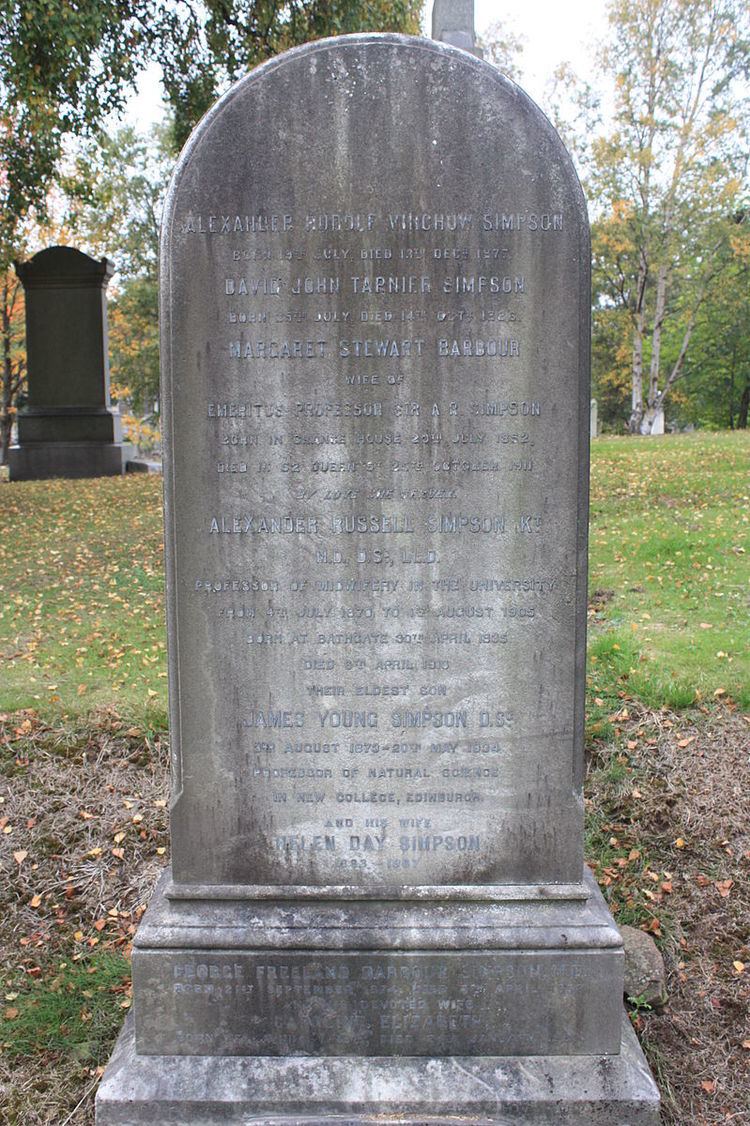Pen name J. Y. Simpson Nationality Scottish | Spouse Helen Huntingdon Day Name James Simpson | |
 | ||
Born 3 August 1873
Edinburgh, Scotland, U.K. ( 1873-08-03 ) Died 20 May 1934(1934-05-20) (aged 60)
Edinburgh, U.K. Occupation Writer, biographer, lecturer, diplomat, scientist, theologian Genre Non-fiction, biography, theology | ||
James young simpson a new world is born
James Young Simpson (1873–1934), M.A., D.Sc. (Edin.), F.R.S.E, F.S.A. (Scot.), F.R.A.I., Hon. Jur. D. (Tartu, Estonia), Hon. Sc.D. Middlebury College, U.S.A. He was a Professor of Natural Science, writer, diplomat, biographer and theologian.
Contents
- James young simpson a new world is born
- Medical history sir james young simpson chloroform
- Life
- Work
- Association with Russia and the Baltic States
- Professional and Other Posts
- Professional honours
- Publications
- References
Medical history sir james young simpson chloroform
Life
James Y. Simpson was born in Edinburgh on 3 August 1873. His father was Sir Alexander Russell Simpson (1835-1916), professor of midwifery at Edinburgh University and his mother was Margaret Stewart Barbour. His father was the nephew of James' namesake, James Young Simpson, the first person to use chloroform as an anaesthetic on humans. The family lived at 52 Queen Street, a property inherited from his great uncle and namesake James Young Simpson.
James was educated at George Watson's College, Edinburgh and at University of Edinburgh which he attended from 1891 to 1894 when he graduated M.A. He graduated D.Sc., by thesis in 1899 after two summers as a research student at Christ's College, Cambridge. He married Helen Huntington Day of Indianapolis, U.S.A., and died on 20 May 1934 in Edinburgh.
He is buried with his parents in the south-west section of Grange Cemetery close to the rear embankment behind the central vaults.
Work
As a boy, he visited Paris with his father and was introduced to Louis Pasteur. Pasteur laid his hand on Simpson's head and exclaimed: "Travaillez, mon ami, travaillez!" [Work, my friend, work!] Turning to the father, he said "A-t-il dit, Oui?" [Has he said, yes?] Simpson seems to have implemented Pasteur's injunction throughout his life. In his writings, his dominant interest lay in showing the connection between science and religion. In his view, there is no contradiction between these, and he views Christianity as the natural outcome of man's evolutionary progress. Jesus Christ is "the fulfilment of all that went before. . . He is the Alpha and Omega of strictly human history." and so on. In a later book, Nature: Cosmic, Human and Divine (1929), Simpson argues that religion results from the confrontation of Mind with the Infinite Energy of the universe as suggested by Heisenberg's indeterminacy principle.
Association with Russia and the Baltic States
Simpson's association with Russia began when Prince Nicholas Galitzin visited Edinburgh in the early 1890s. Simpson befriended him, and accompanied him on a visit to Siberia in the summer and autumn of 1896. The object of the journey was to visit Siberian prisons and distribute Bibles and other religious works to prisoners. Simpson made elaborate notes on the topography, agriculture and customs of Siberia. These notes led to the publication of the book, Side-lights on Siberia in 1898. Subsequent books on Russia resulted from his regular visits to that country. In September 1910, Simpson accompanied his father to a Medical Congress in Petrograd (now St. Petersburg) in Russia. On this one week's visit he met Baron Nicolai and other Christians who were impressed by his reconciliation of Christianity with science. His last visits to Russia were in 1916 and April/May 1917 before the Revolution took place. In 1919, Simpson worked with the British Delegation to the Peace Conference at Versailles to ensure that the Baltic States and Finland were established as independent states. He was subsequently given awards by these four countries in recognition of his services. His last visit to the Baltic States was in June/July 1932, when he received the honorary degree of Doctor of Law (D.Jur.) at the University of Tartu.
